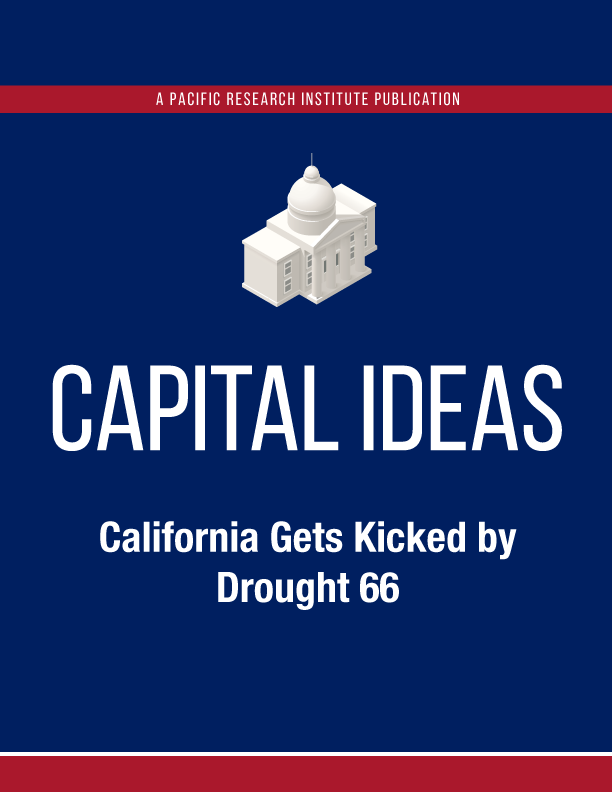The recent record-breaking bomb cyclone that replenished depleted reservoirs and swelled shriveling rivers was not enough to break the drought. So parched is the state that Gov. Gavin Newsom has declared a state of emergency, a condition Californians, bedeviled by wildfires, unaffordable housing, growing homelessness, a punitive cost of living, and wrecked roads have become accustomed to living under.
This year is the state’s driest since 1924, says the California Department of Water Resources, coming before the state could fully recover from 376 weeks of drought that lasted nearly all of the 2010s. The governor’s proclamation of emergency notes 2021 is the “second consecutive year of dry conditions,” producing “drought in all parts of the state and extreme or exceptional drought in most of the state.” It also “enables the state Water Resources Control Board to ban wasteful water practices,” which means forget using the garden hose to wash sidewalks and driveways.
While they don’t have the punch of a full wet season, occasional rainy days, such as those we had last month, can still be helpful. But insufficient storage, and runoff from urban areas into the Pacific Ocean, means the positive effects don’t last long. In declaring the emergency, Newsom touched on the point, noting the “dire” storage “conditions of California’s largest reservoirs,” which have contributed to perpetual water shortages. It’s scandalous yet true that zero storage “of statewide significance” has been added in more than 40 years, when the population was a little more than 24 million, about 60% of today’s nearly 40 million.
In 2020’s Winning the Water Wars, author Steven Greenhut noted that storage “remains one of the most effective means to plan for future drought years.” Experience proves his point. While the rest of the state was trying to cope with the extended drought in 2015, San Diego’s water supplies were 99% of their normal levels, thanks, in part, to the expansion of the San Vicente Reservoir. It had recently been raised 117 feet, enough to nearly double its capacity, and was “the highest dam-raise project undertaken,” not just in California but in the entire nation, says Water Technology, an industry news site.
A year earlier, Californians, by a 67-33 margin, told state leaders to get busy with water supply infrastructure projects. Of the overall $7.5 billion in bonds to be issued by Proposition 1, $2.7 billion were expressly dedicated to “water storage, dam, and reservoir projects.” Though “it was still a relatively small percentage of the overall proceeds,” writes Greenhut, it was nevertheless “the first time since the 1970s so much storage money was included in a bond.”
“Water-storage supporters were happy to get whatever infrastructure funding they could in light of recent history.”
Yet six years after Proposition 1, construction had “yet to start on any of the major storage projects, which means several wet years of water supply are being flushed into the ocean.”
The drifting course of the Sites Reservoir, a planned storage facility about an hour from Sacramento that would be the eighth largest reservoir in the state and the biggest storage project of Prop. 1, is emblematic of California’s water brawls. The Sacramento Bee reported in July the project is “mired in red tape and struggling with rising costs, even after the project was downsized.” Construction isn’t scheduled to start until 2024 and will be another six years before filling begins.
Much of the blame rests on the extreme and powerful environmental interests, says California native, farmer, and scholar Victor Davis Hanson, “who for 40 years worked to undermine the prudent expansion of the state’s water infrastructure.”
Additional storage doesn’t have to come at the expense of the environment, though. In fact, “water abundance through storage” has environmental benefits, according to Greenhut.
“As the water has dried up during our drought, note the widespread destruction of the state’s salmon populations. When there’s no water to release from the dams, the fish populations suffer,” says Greenhut. “Note how near Monterey a proposed desalination plant will take pressure off of the overburdened Carmel River. That’s another example of how additional water supplies support environmental restoration.”
The governor expects Californians to comply with his orders, but that’s asking too much when a generation of politicians has refused to perform even the basic tasks of public service. While there is no way to excuse the dereliction of duty, moving faster on what voters asked for seven years ago would at least create the appearance of responsible governance.
Kerry Jackson is a fellow with the Center for California Reform at the Pacific Research Institute.


